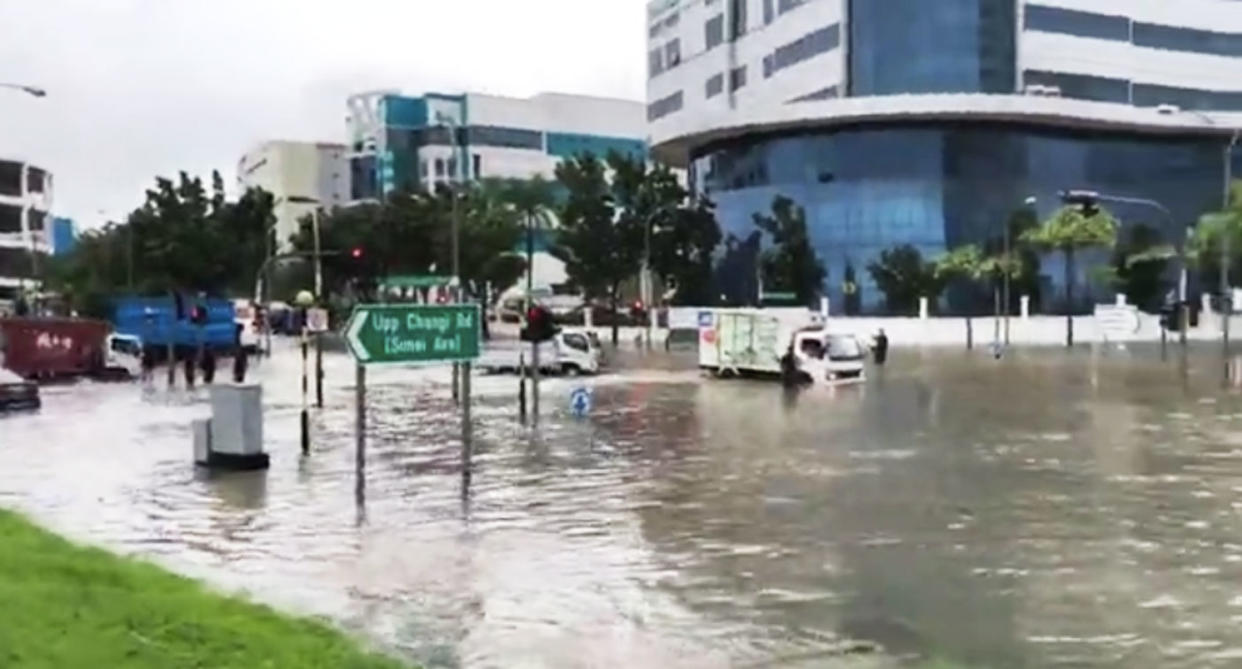Flash floods in Singapore can't be completely eliminated: Masagos

Flash floods cannot be completely eliminated, even as the Singapore government has invested S$1.2 billion in drainage improvement works, said Minister for the Environment and Water Resources Masagos Zulkifli.
With climate change, more intense rainfall is expected to be the norm in the future, said Masagos. He was responding to questions posed in Parliament on Monday (5 February) about how flash floods could be prevented.
Citing studies from the Potsdam Institute for Climate Impact Research, Masagos said the flood risk from rainfall changes will increase in the next two to three decades due to global warming.
On the morning of 8 January this year, Singapore recorded a total rainfall of 118.9mm – half the average monthly rainfall fell in just over four hours, said Masagos. Flash floods occurred in some areas in the eastern parts of Singapore.
“The need for adaptation is significant, even for countries with good infrastructure, like Singapore,” he said.
PUB has raised the drainage design standard since 2011 so that drains can handle up to 45 per cent higher rainfall intensity, said Masagos.
Since 2012, PUB has commenced and completed drainage improvement works at 327 locations. Another 73 locations are undergoing similar works, with 22 more planned this year. The government has invested S$1.2 billion and has set aside another S$500 million for drainage works for the next two to three years around the island.
Even so, Masagos stressed that it is not feasible to build drains that can accommodate every extreme rainfall event.
Citing the example of the Bedok canal, Masagos said the canal was being widened from 38m to 44m at the cost of S$1.28 million. It is wide enough to accommodate an expressway of 10 lanes, said Masagos. “Even with widening, we cannot guarantee that there will be no floods in the future as rainfall events of even higher intensity could occur, which exceed the design capacity. This is especially so with climate change,” he said.
Given competing needs for other land uses, “We have to design with practical considerations and not for extreme conditions all the time for all places,” said Masagos, adding that drain improvement was not the only solution to alleviating flash floods.
It is also important that members of the public are kept informed of flash flood incidents, said Masagos. PUB keeps members of the public informed of potential flash floods through social media updates and SMS alerts, he said.
However, while PUB has sought to help members of the public better cope with flash floods by providing timely alerts and updates, the weather systems in this region pose a “forecasting challenge”, said Masagos. Singapore experiences “convective thunderstorms” which tend to be localised, develop suddenly and are of short duration. “This limits our lead time of our warnings of heavy rain, and consequently, of flash flood,” said Masagos.
Related stories:
Obstructed earth drain worsened Tampines flash flood: PUB
Heavy rain causes flash floods in parts of Singapore
Flash Floods: Can You Claim Motor Insurance for Flood Damage in Singapore?



